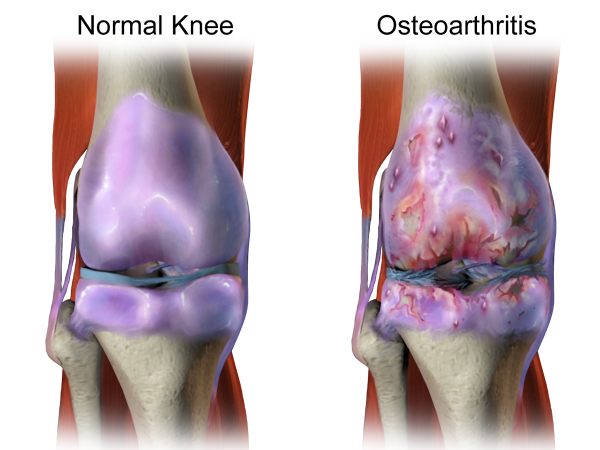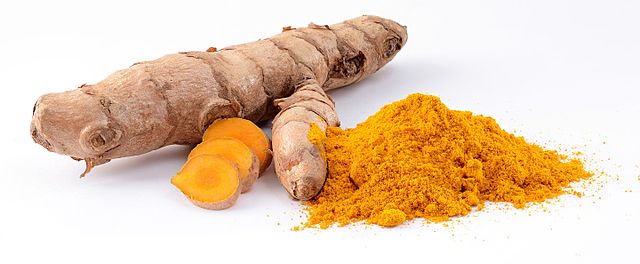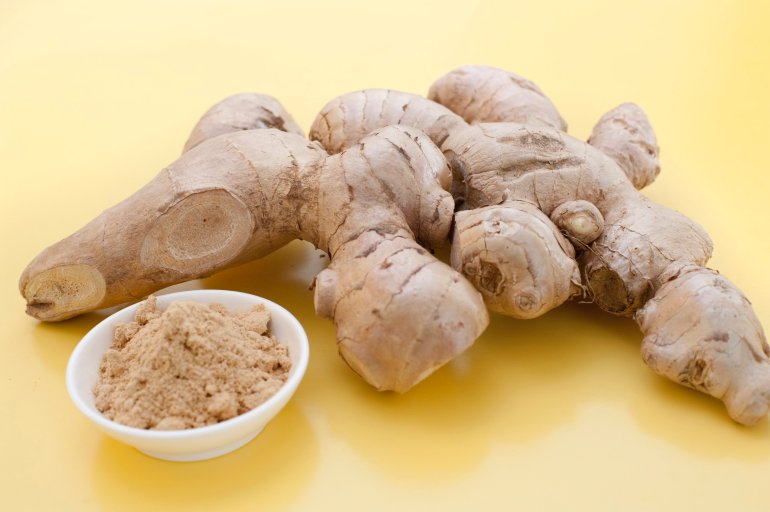I just turned 49 in March, which was no big deal. But when I realized that I’d turn 50 next year, I suddenly felt an anxious pang of — something. Mortality? Life winding down? Being put out to pasture? Fortunately, it was difficult to brood too long with two toddler boys running me around in circles (literally). In general I’m extremely grateful for my good health, but I know that as the years go by, I’ll get aches and pains somewhere in my joints, as it does with most of us when we age.
In my family medicine clinic I take care of many patients with painful arthritis, struggling to maintain a healthy and active lifestyle. Most manage with the usual acetaminophen and NSAIDs, but for many that’s not enough. Quite a few are on much stronger pain medicines, dealing with their many side effects. So it’s no surprise that so many try supplements that are alleged to help with the pain and mobility. But which ones really work, and which are a waste of money? To help my patients better, I did a literature review, and I’d like to share what I learned with others. Please feel free to share this with your colleagues and loved ones. You can also download and print a PDF version here. (please note that this review discusses osteoarthritis and not rheumatoid arthritis, a much more serious inflammatory disease).
Don’t Forget The Basics
I can’t stress enough how no supplement is as important as keeping your bones healthy from a healthy diet and exercise. No matter your pain levels, multiple studies show long term benefits with light activity and mind-body exercises such as tai chi and yoga. And a healthy diet full of calcium and healthy anti-inflammatories (fruits and vegetables) is also crucial. All women should also make sure they’re getting enough calcium and vitamin D, at all ages.

And since obesity is a major cause of arthritis, especially in the knees, it’s always important to lose weight, no matter your age or what medicines you’re taking.
Having said that, here’s what I found about supplements:
- Glucosamine and chondroitin: let’s discuss this first, as this combination is very popular. People may be surprised that the evidence actually isn’t as strong as most people think. One reviewer says “it appears that most of the positive studies were funded by manufacturers of glucosamine products, and most of the studies performed by neutral researchers failed to find benefit.” What seems certain from reviews such as Cochrane is that you should stick with glucosamine sulfate (the “Rotta preparation”) and not glucosamine hydrochloride; fortunately most formulations seem to have the first, more effective one. I was intrigued by the two studies that show possible actual improvement in joints — but these studies were sponsored by the drug makers, and many other studies don’t show much improvement, if any.
Most of my primary care colleagues are unenthusiastic about this supplement. Still, I think it’s reasonable to try this for three to six months at the most, and if people see no improvement at all in pain and movement, they should just stop it. The usual dose seems to be 1,500 mg of the glucosamine sulfate. The price isn’t so bad, either; for example, a generic from Costco is only $6.40 a month. One note: most seem to also combine MSM, and while the evidence for this supplement is very poor, at least there’s no reported harm. - SAMe (s-adenosylmethionine): I’m more impressed about SAMe than glucosamine for osteoarthritis; the Natural Medicines Database says that “multiple clinical trials show that taking SAMe orally is superior to placebo and comparable to NSAIDs, including the COX-2 inhibitor celecoxib (Celebrex), for decreasing symptoms associated with osteoarthritis. SAMe is associated with fewer adverse effects than NSAIDs and is comparable in reducing pain and improving functional limitation.” But one limitation could be the cost: most studies used 600-1200 mg daily, and taking 400 mg twice a day using the best values on iHerb (for example) would be at least $45-50 a month. But some studies using only 400-600 mg a day, even for up to two years, showed effectiveness, bringing your monthly cost to a reasonable $20. SAMe is reported to take up to a month to notice a difference. But otherwise, this could be a good option for many. If you take it for three months and don’t notice any help, you should just stop it.
Those two supplements seem to have the most research, and probably should be tried first. The next level of research includes:
 Turmeric: This wonderful spice seems to have some health benefits, including alleviating pain. There are a few double-blind studies which do show improvements in pains, similar to improvements from NSAIDs like ibuprofen, with less risks to the stomach. Most studies used 1,000 mg a day, which usually would be 500 mg twice a day. There seem to be a few formulas which combine ginger and boswellia, which could be a better value.
Turmeric: This wonderful spice seems to have some health benefits, including alleviating pain. There are a few double-blind studies which do show improvements in pains, similar to improvements from NSAIDs like ibuprofen, with less risks to the stomach. Most studies used 1,000 mg a day, which usually would be 500 mg twice a day. There seem to be a few formulas which combine ginger and boswellia, which could be a better value. Indian frankincense (boswellia): This is another ancient Ayurvedic medicine which has a few randomized studies which show benefit for arthritis pain and function, comparable to the usual NSAID medicine. Benefits also seem to last up to a month after stopping the medicine, which is much better than an NSAID, which stops working immediately. It takes about a week to start working. There aren’t a lot of studies, but it’s promising, and perhaps worth a try. The dose seems to be 100-300 mg a day, divided into two doses.
Indian frankincense (boswellia): This is another ancient Ayurvedic medicine which has a few randomized studies which show benefit for arthritis pain and function, comparable to the usual NSAID medicine. Benefits also seem to last up to a month after stopping the medicine, which is much better than an NSAID, which stops working immediately. It takes about a week to start working. There aren’t a lot of studies, but it’s promising, and perhaps worth a try. The dose seems to be 100-300 mg a day, divided into two doses.- Avocado Soy Unsaponifiables (ASU): This oil extract is a very interesting chemical, as researchers are excited that it may actually heal damaged cartilage, or at least slow down progression of damage (here’s a good review article). And a few RCT studies have shown reductions in pain and stiffness while improving joint function. But a longer study didn’t show much benefit, and other studies haven’t found improvements in the joints. It also may take a few weeks to notice an effect. Still, this could be an interesting option if you’ve already tried and failed the more traditional supplements. The usual daily dose seems to be 300-600 mg daily.
 Ginger: Here’s another wonderfully fragrant root which also seems to benefit arthritis — but the evidence is relatively limited, and it also seems to take more than three months to notice a benefit. There are also quite a bit of side effects, especially if patients are also taking blood thinners like coumadin, aspirin or NSAIDs. I’d be hesitant to try this one as a supplement — but it sure is lovely in food!
Ginger: Here’s another wonderfully fragrant root which also seems to benefit arthritis — but the evidence is relatively limited, and it also seems to take more than three months to notice a benefit. There are also quite a bit of side effects, especially if patients are also taking blood thinners like coumadin, aspirin or NSAIDs. I’d be hesitant to try this one as a supplement — but it sure is lovely in food!

General Consensus?
Let’s now step back a bit and review the evidence, especially from my favorite evidence-based sources, all of whom are certified by the Health on the Net Foundation as sources of trustworthy medical information. By the way, I strongly recommend that everyone use their HONCode search engine anytime they’re looking for medical advice, especially regarding supplements.
- The Natural Medicines Database, a fantastic resource for doctors, most favors topical capsicum, glucosamine sulfate, and SAMe as “likely safe and effective”. On their next level, beta-carotene; chondroitin sulfate; ginger; Indian frankincense (boswellia); turmeric; and vitamin C are “Possibly effective and likely safe”.
- The Cochrane Library, a well respected independent review board, reviewed herbals for osteoarthritis in 2014 and found poor evidence for most supplements; they only found good enough data for two herbals, including boswellia, which they slightly favored over ASU. Other studies found lukewarm evidence for glucosamine sulfate.
- The Natural & Alternative Treatments database, which you can access in sites like iHerb.com or ConsumerLab.com, has an osteoarthritis review which favors SAMe, ginger, UC-II collagen and boswellia, with more mixed data on glucosamine, MSM, and omega-3 fish oils.
- The National Center for Complementary and Integrative Health (NCCIH), the official governmental agency, has an osteoporosis review which doesn’t strongly recommend any herbals at all, including glucosamine, which they still classify as of “uncertain” impact.
Where To Buy?
Don’t forget first to make sure your supplement doesn’t have bad side effects with your prescription drugs: you can use the free multi-drug interaction checker from Medscape here, which is savvy enough to include supplements as well as prescription drugs. And don’t forget to tell your doctor which supplements you use! They definitely need to be aware of potential side effects and drug interactions (especially those blood thinners).
I’m a big fan of Costco’s supplements for value and quality; for online purchases, the iHerb website is much easier to use than simply using Amazon, with very good prices and free access to The Natural & Alternative Treatments database. iHerb is also fantastic for shipping to other countries; when living in China, we used iHerb constantly, for very little added shipping cost.
And since there’s such a a wild range of active ingredients in these unregulated herbals, I highly recommend the independent ConsumerLab.com, as they’ve tested thousands of supplements and have objective data which brands are the best, for both quality and value.

My Bottom Line
In general, if your supplement does no harm, and has some evidence it may help improve pain and your quality of life, why not try?
I think for most people with osteoarthritis, trying a supplement on top of your usual treatments is perfectly reasonable. I’d start with three month trials of glucosamine-chondroitin sulfate, and then SAMe. Next choices could include boswellia, ASU or turmeric. And if if works, keep going with it, and you can consider adding a second supplement for extra benefit. Good luck!
What do you use, or prescribe? Feel free to leave comments below.
Follow me on Facebook: @BainbridgeBabaDoc
Photography: www.richardsaintcyr.com
 Turmeric: This wonderful spice seems to have some health benefits, including alleviating pain. There are a few double-blind studies which do show improvements in pains, similar to improvements from NSAIDs like ibuprofen, with less risks to the stomach. Most studies used 1,000 mg a day, which usually would be 500 mg twice a day. There seem to be a few formulas which combine ginger and boswellia, which could be a better value.
Turmeric: This wonderful spice seems to have some health benefits, including alleviating pain. There are a few double-blind studies which do show improvements in pains, similar to improvements from NSAIDs like ibuprofen, with less risks to the stomach. Most studies used 1,000 mg a day, which usually would be 500 mg twice a day. There seem to be a few formulas which combine ginger and boswellia, which could be a better value. Indian frankincense (boswellia): This is another ancient Ayurvedic medicine which has a few randomized studies which show benefit for arthritis pain and function, comparable to the usual NSAID medicine. Benefits also seem to last up to a month after stopping the medicine, which is much better than an NSAID, which stops working immediately. It takes about a week to start working. There aren’t a lot of studies, but it’s promising, and perhaps worth a try. The dose seems to be 100-300 mg a day, divided into two doses.
Indian frankincense (boswellia): This is another ancient Ayurvedic medicine which has a few randomized studies which show benefit for arthritis pain and function, comparable to the usual NSAID medicine. Benefits also seem to last up to a month after stopping the medicine, which is much better than an NSAID, which stops working immediately. It takes about a week to start working. There aren’t a lot of studies, but it’s promising, and perhaps worth a try. The dose seems to be 100-300 mg a day, divided into two doses. Ginger: Here’s another wonderfully fragrant root which also seems to benefit arthritis — but the evidence is relatively limited, and it also seems to take more than three months to notice a benefit. There are also quite a bit of side effects, especially if patients are also taking blood thinners like coumadin, aspirin or NSAIDs. I’d be hesitant to try this one as a supplement — but it sure is lovely in food!
Ginger: Here’s another wonderfully fragrant root which also seems to benefit arthritis — but the evidence is relatively limited, and it also seems to take more than three months to notice a benefit. There are also quite a bit of side effects, especially if patients are also taking blood thinners like coumadin, aspirin or NSAIDs. I’d be hesitant to try this one as a supplement — but it sure is lovely in food!